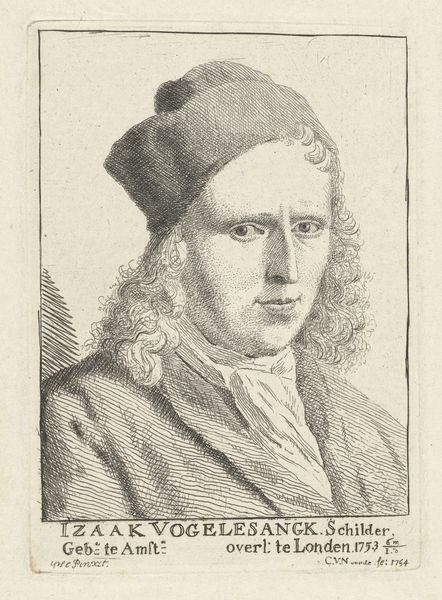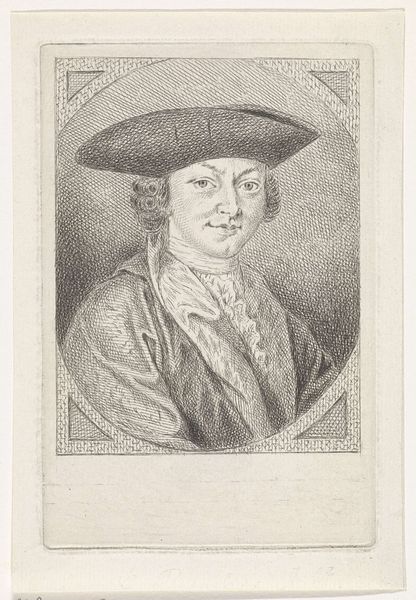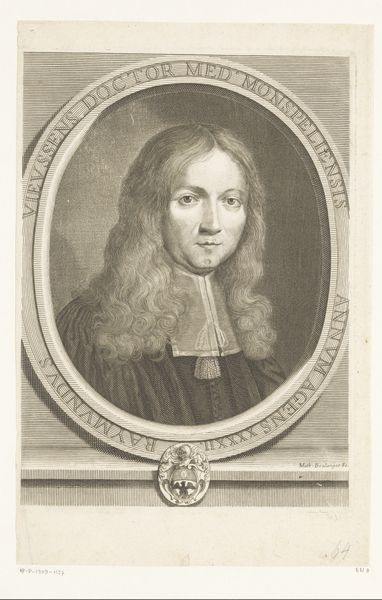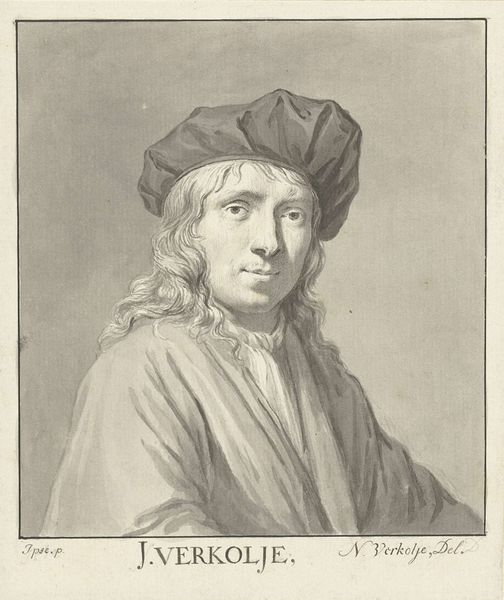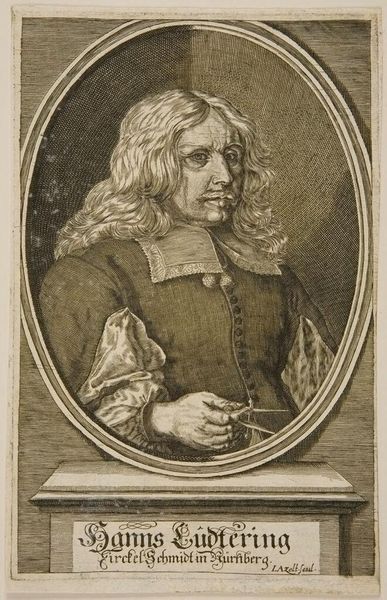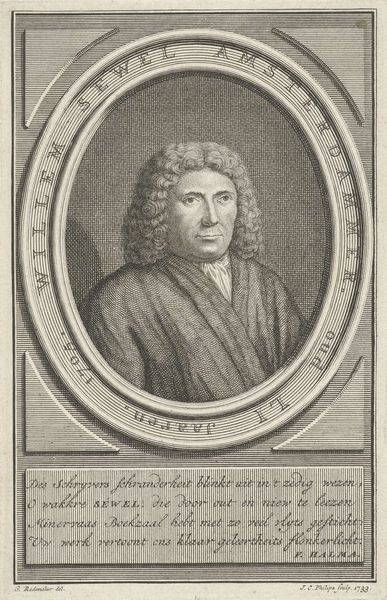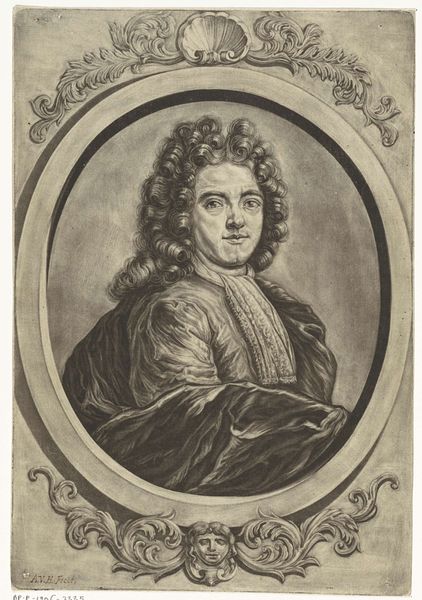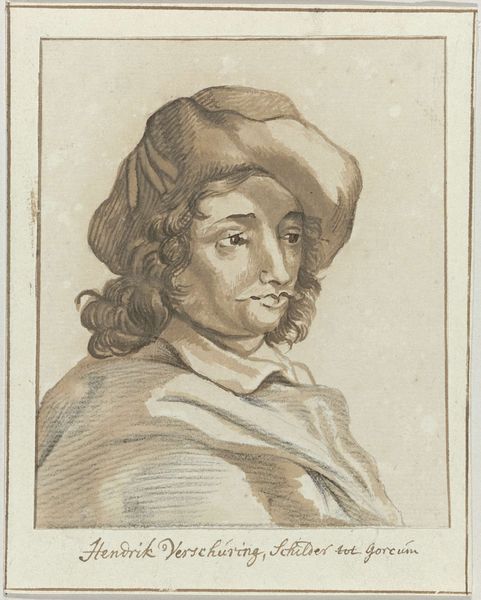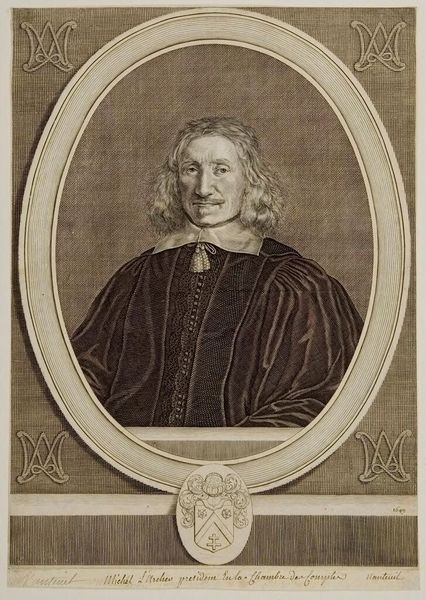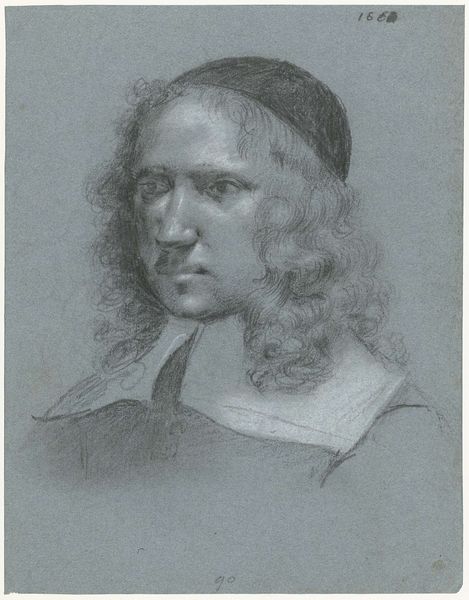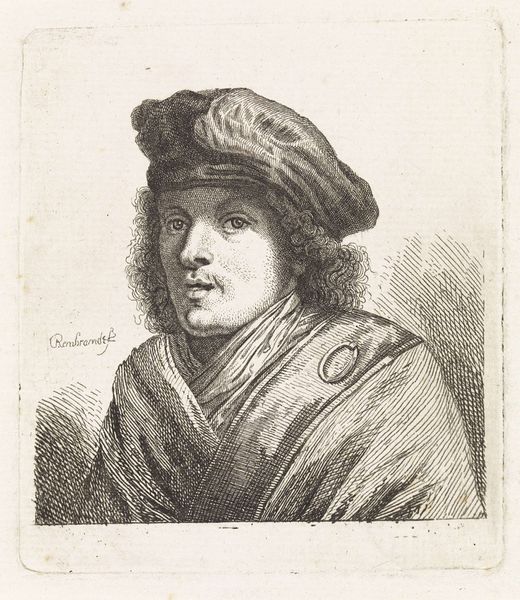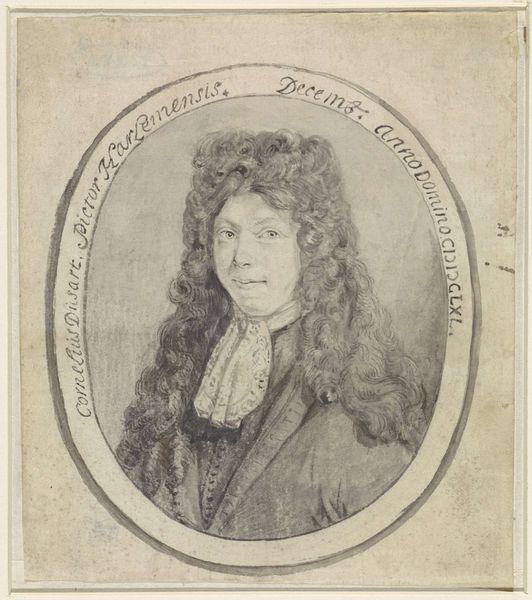
watercolor
#
portrait
#
oil painting
#
watercolor
#
rococo
Dimensions: height 88 mm, width 66 mm
Copyright: Rijks Museum: Open Domain
Editor: So, this is Cornelis van Noorde's "Portret van Izaak Vogelensanck," made with watercolor sometime between 1741 and 1795. It's such a delicate portrait; the colours are muted, and the oval composition is rather striking. What can you tell me about its historical context? Curator: It's fascinating how seemingly "delicate" portraits like this were actually vital tools in constructing and projecting social status. Vogelensanck was a painter himself, and portraiture, then as now, signaled entry into certain circles. Note the Rococo style with that pastel palette and decorative frame. These details were deeply tied to courtly fashion and aspirations, projecting a sense of elegance and refinement. Does that shift your initial impression? Editor: It does. I was focusing on the visual aspects, but you're making me think about who this was for and what they were trying to communicate. Was the museum setting significant in this kind of art's legacy? Curator: Absolutely. Museums and art institutions later codified "taste" by acquiring and displaying pieces like this, reinforcing certain values. The Rijksmuseum exhibiting this piece today plays a part in establishing what we understand as Dutch art history. Think about the story the museum chooses to tell by exhibiting this, and not some other, equally historically relevant artwork. How do you think this impacts a contemporary understanding of Dutch identity? Editor: I suppose displaying Vogelensanck reinforces certain established ideas about class and artistry, while perhaps excluding other perspectives or artists that weren't as highly regarded at the time. Curator: Precisely! The art world, then and now, reflects a complex interplay of power. Hopefully, this helps contextualize your first impressions of the "delicate" quality of the portrait. Editor: Definitely, I’ll be considering art’s role in projecting status and how institutions contribute to the story. Thanks for the fresh perspective!
Comments
No comments
Be the first to comment and join the conversation on the ultimate creative platform.
